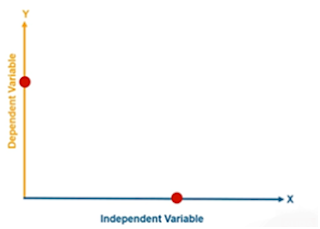Performance Metrics for Regression model
Performance Metrics for the Regression model
In a
machine learning Algorithm, once the model is built, the next step is to use of
various performance criteria to evaluate Machine learning Models.
Various
performance Metrics/Criteria used for regression models and Classification models
are different and are listed below.
Regression Model: In
Regression analysis output is a continuous value, therefore for Regression
performance following methods are used
- Mean squared error (MSE)
- Mean average error(MAE)
- Root mean squared error (RMSE)
- R Square
Classification Model: In the
classification model output is Discret form and for classification performance
following methods are used
- Confusion matrix
- Accuracy
- Precision
- Recall (sensitivity)
- Specificity
- ROC curve (AUC) ROC Area Under
Curve is useful when we are not concerned about whether the
small dataset/class of dataset is positive or not, in contrast to the F1 score
where the class being positive is important.
- F-score(F1 score is useful when the size of
the positive class is relatively small)
Performance
metrics should be chosen based on the problem domain, project goals, and
objectives.
1.
Mean Squared Error:
MSE or Mean Squared Error is one of the
most preferred metrics for regression tasks. It is simply the average of the
squared difference between the target value and the value predicted by the
regression model. As it squares the differences, it penalizes even a small
error which leads to over-estimation of how bad the model is. It is preferred
more than other metrics because it is differentiable and hence can be optimized
better.
Here n is the number of samples, y- is the
target value and Ŷ cap is the predicted valure
- Mean
Average Error (MAE)
MAE is
the absolute difference between the target value and the value predicted by the
model. The MAE is more robust to outliers and does not penalize the errors as
extremely as mse. MAE is a linear score which means all the individual
differences are weighted equally. It is not suitable for applications where you
want to pay more attention to the outliers.
3.
Root Mean Squared Error:
RMSE
is the most widely used metric for regression tasks and is the square root of
the averaged squared difference between the target value and the value
predicted by the model. It is preferred more in some cases because the errors
are first squared before averaging which poses a high penalty on large errors.
This implies that RMSE is useful when large errors are undesired.
![]()
4.
R Square:
The coefficient of Determination or R² is another metric used for evaluating the performance of
a regression model. The metric helps us to compare our current model with a
constant baseline and tells us how our model is better. The constant
baseline is chosen by taking the mean of the data and drawing a line at the
mean. R² is a scale-free score that implies it doesn't matter whether the
values are too large or too small, the R² will always be less than or equal to
1.
The
Mean Squared Error (MSE) of the baseline model is calculated by taking the
average of the squared differences between the actual values and the mean of
the actual values.
The
baseline model assumes that every prediction is simply the mean of the observed
data, so the MSE of the baseline model is given by:
·
yi is the actual value of the dependent variable.
·
yˉ
is the mean of the actual values.
·
n is the number of observations.
This
value represents the average squared difference between the actual values and
the mean of the actual values.
The model's Mean Squared Error (MSE) can be calculated by taking the average
of the squared differences between the actual values and the predicted values
from the regression model.
·
yi is the actual value.
·
y^i is the predicted value from the model.
·
n is the number of observations.
This
indicates that the model's predictions are very close to the actual values,
reflecting the model's high accuracy.









Comments
Post a Comment